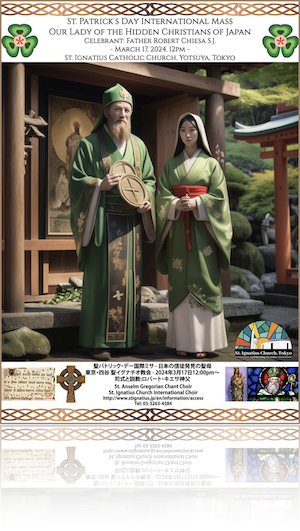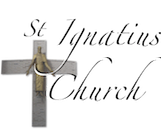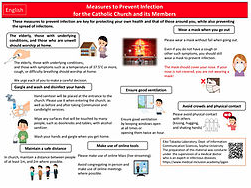
5Th Sunday Of Lent March 17, 2024

The first reading today, from the Prophet Jeremiah, tells us that the Word of God is more than an external code of law etched on stone or written in books. It’s an internal urgency impressed on the heart. It’s the inner Word of God saying “I am your God and you are my people.” In the psalm we prayed to be washed from our guilt and cleansed from our sin so as to have a pure heart filled with God’s holy Spirit.
This Word of God became visible to the eyes when it took flesh in the person of Jesus. We can see him relating to God as Father and showing his love and concern for us weak human beings. He is the visible manifestation of a loving and compassionate God living with us and entering completely into all our pain and weakness.
We see that in today’s passage from the Gospel of John. When Jesus is told that some non-Jewish people want to meet him, he instinctively knows that the time has come—he calls it “his hour”—it is the time when he needs to enter deeply into our weakness and even our death, in order to achieve his goal of perfect union between humanity and God. He uses the image of a grain of wheat being buried in the earth so that it can grow and bear fruit.
Jesus seems to feel some resistance or doubt about this need to become so fully human as to die. “My soul is troubled. What am I to say? Am I to say ‘Father, save me from this hour’? But it was for his very reason that I have come to this hour. Father, glorify your name.” Here we might recall the agony scene in the other gospels: “Father, if it is possible, let this cup pass from me. But not my will, but your will be done.” Or look again at that passage from the Hebrews in the second reading: “Christ offered up prayer and entreaty, aloud and in silent tears, to the one who had the power to save him out of death. … Although he was Son, he learned to obey through suffering … and became the source of salvation for all who follow him.” Or as the gospel put it, “And when I am lifted up from the earth”—that is to say, lifted up on the Cross and lifted up to the presence of God—“I shall draw all to myself.”
Through these Sundays of Lent, we are being led to a deeper share in the final chapters of Jesus’ mission to us: his passion, his death, his resurrection and ascension. Next Sunday we’ll begin the commemoration of the passion by welcoming Jesus with palm branches and we’ll follow him through Holy Week to the surprising climax of Easter Sunday.
Some of you are probably saying to yourself “Today is March 17. When is he ever going to get around to St Patrick?” OK. Now is the time to talk about St Patrick, because any saint worth being canonized has had a share in the passion and death of Jesus. St Patrick’s share began when he was abducted from Roman Britain at the age of 16 and taken as a slave to Ireland. He was made to tend sheep there and was treated almost on a par with the animals. But this suffering endured by the young Patrick for 6 years was like the grain of wheat buried in the earth. It bore fruit. It bore the fruit of a deep conversion in Patrick’s heart. He managed to escape and return home but, not content with retrieving his freedom, he desired to devote himself fully to the Lord and to the work of the Lord.
To make a long story short, he went to Gaul (present-day France) to prepare for the priesthood. He was ordained a bishop and returned to Britain, but he heard a voice inside him begging him to come back to Ireland, to walk with them and bring them the gospel of Christ. Like Jesus in his agony, he wondered whether this was really the thing to do, but he went, and once he got to Ireland he spared no effort to spread the gospel. As he wrote of himself: “I came to the Irish peoples to preach the Gospel and endure the taunts of unbelievers. …If I am worthy, I am ready also to give up my life, without hesitation and most willingly, for his name. I want to spend myself in this country even in death, if the Lord should grant me this favor.”
Often enough he ran the risk of martyrdom, but he kept at his task with such great enthusiasm that he is rightly known as the apostle and patron saint of Ireland, something of which Irish people or people of Irish descent all over the world are justly proud—and they keep reminding us of it every year on this day. And the conversion of so many in Ireland resulted in missionaries spreading the faith in Europe and America and around the world. Actually, I myself grew up in an American parish staffed by Irish Capuchins.
You are probably not aware that in Japan March 17 has another meaning. It was the day when a French priest in Nagasaki met a group of 15 Christians whose forebears had preserved the faith underground, as it were, throughout 250 years of persecution. The Catholic faith had been outlawed and suppressed for two-and-a-half centuries through persecution and martyrdom. It brought faithful Christians a real share in the passion of Jesus. When these underground Christians met the priest in Nagasaki, they asked him if he was celibate, if he was faithful to Papa-Sama, and if he had a statue of Mary. The answers to these questions convinced them that the priest was authentic. And their questions convinced the priest that these were true Christians. That surprising encounter is commemorated in Japan on March 17 as the Feast of our Lady of the Discovery of Christians.
We praise the Lord for the preservation of the faith in Japan and we praise the Lord for the conversion of the people of Ireland, who then helped spread the faith around the whole world. Blessings on all! Céad Mile fáilte!
Robert Chiesa, SJ
 ENGLISH
ENGLISH  ESPAÑOL
ESPAÑOL 






